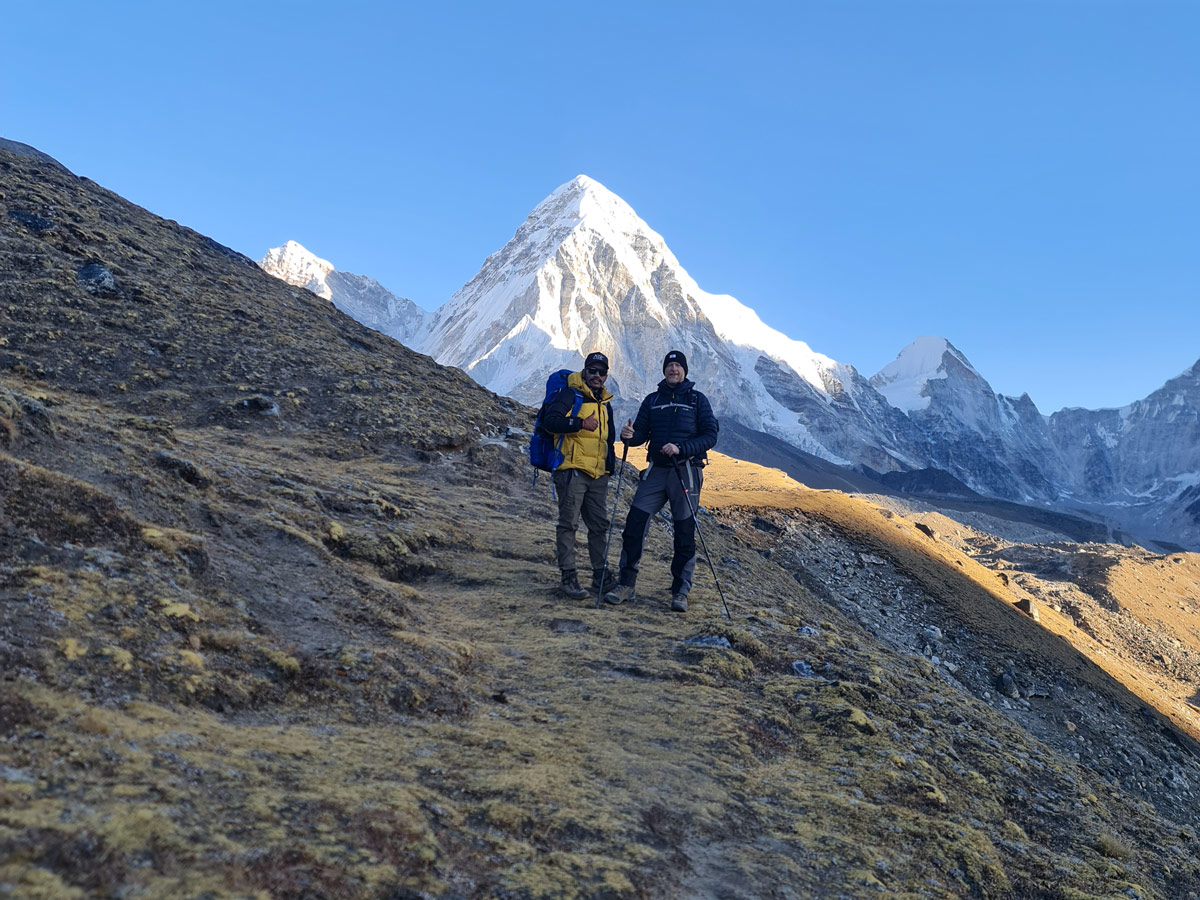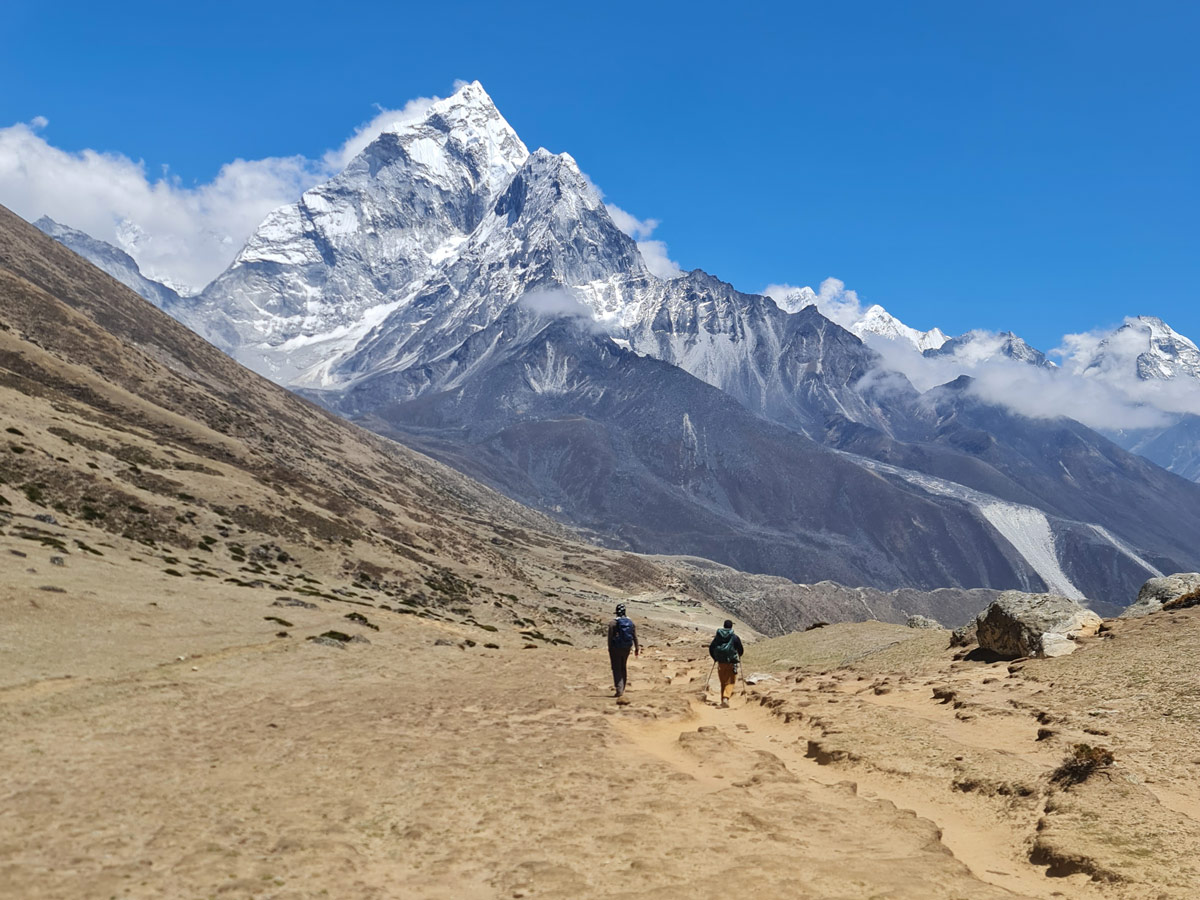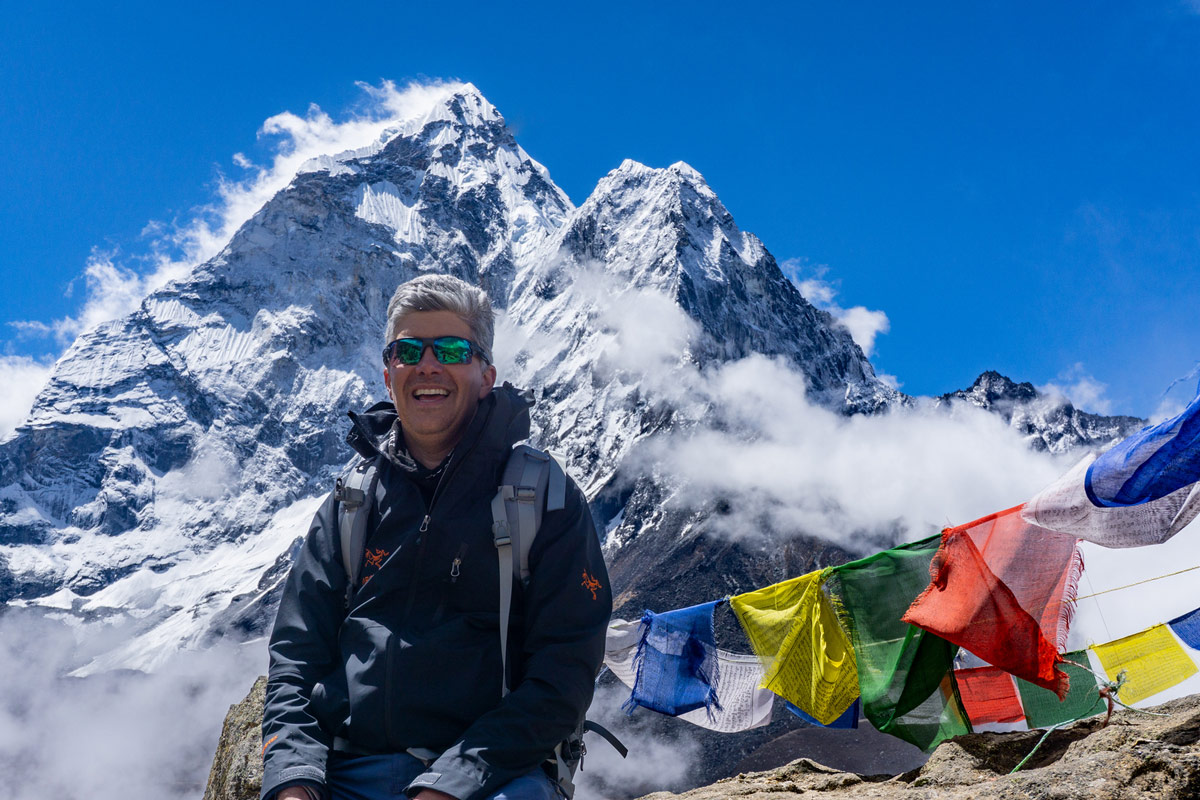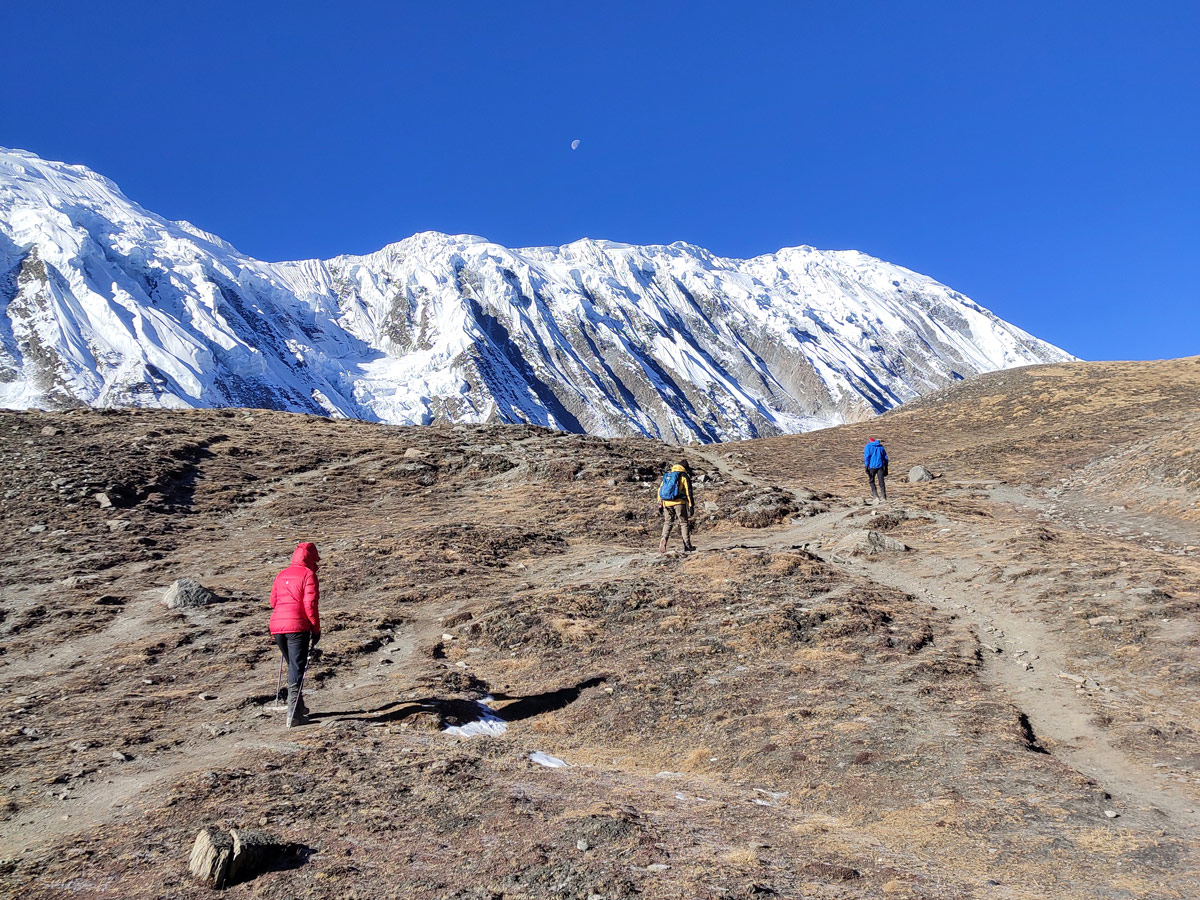The Everest Base Camp Trek is one of the most iconic treks in the world. And why not? The name itself carries the allure of the trek which takes you to the base of the highest peak in the world.
However, the Himalayan grandeur that the trek carries can also sometimes leave beginners scared and confused as most of them think it is too hard for them to achieve. For them, one big question arises: Is the Everest Base Camp trek suitable for beginners?
Well, yes it is! The allure of EBC trek isn’t just for seasoned mountaineers and experience trekkers. In fact, this journey invites everyone with the spirit to conquer it.
Therefore, in this blog, we will be discussing how exactly is Everest Base Camp trek suitable for beginners.
Everest Base Camp Trek Overview and Altitude Insights
The Everest Base Camp trek is not just a journey to a base of Mt. Everest, it in fact is an unforgettable journey and a scaling ground for trekkers who want to evolve as legendary mountaineers and try their hands on scaling Mt. Everest some day in future.
This trek takes you to the base of the highest mountain in the world at 5,364 meters (17,598 feet) at the Everest Base Camp. And this is not where the journey culminates for many trekkers.
Some trekkers even go beyond this point and extend their trek to Kalapathhar at 5,555 meters (18,225 ft) which is one of the most popular viewpoints of the Everest region as well as the pinnacle of the iconic Everest Base Camp trek.
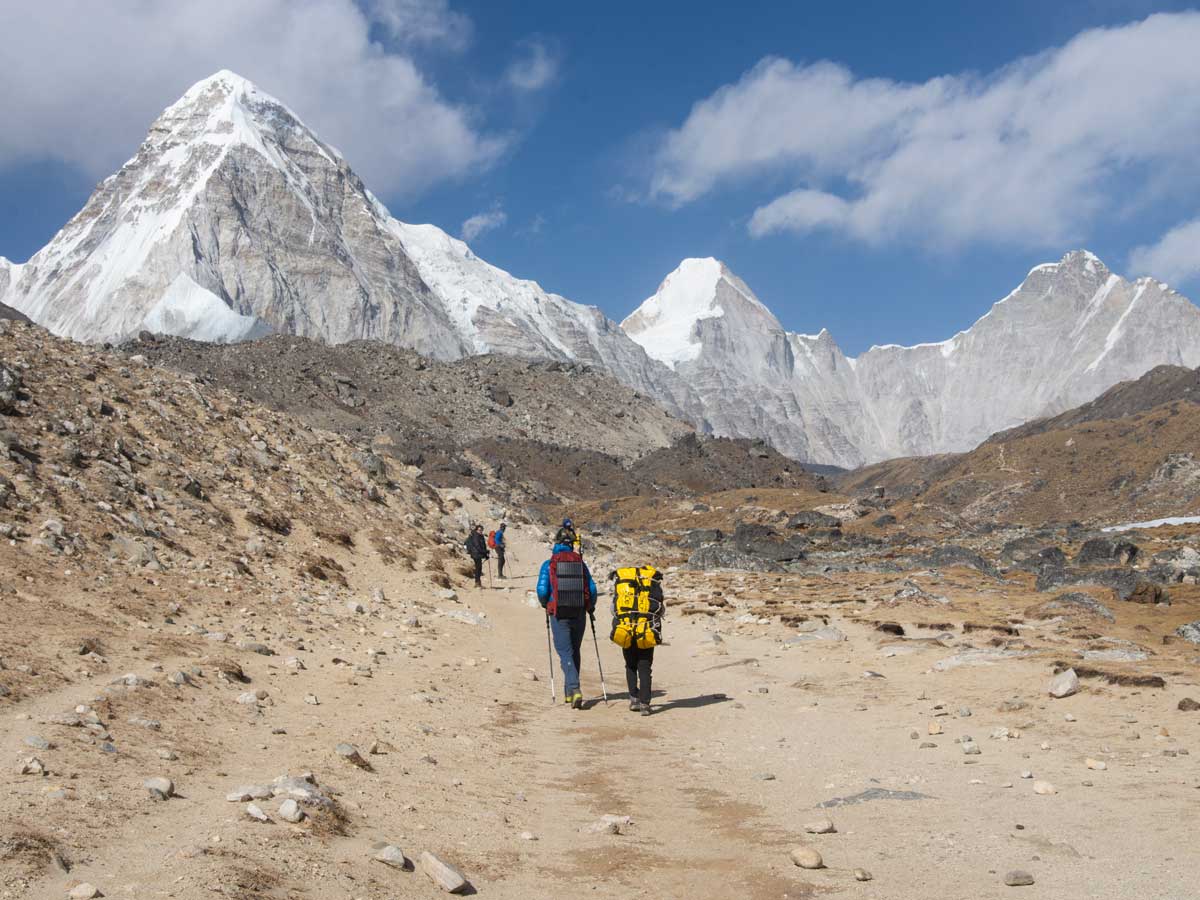
The journey of the EBC trek begins at the Lukla airstrip, the most dangerous airport in the world perched at 2,840 meters. Even this starting altitude can be challenging for some trekkers.
From here on, trekkers move towards Phakding, Namche Bazaar, Tengboche, Pangboche, Dingboche, Lobuche, Gorakshep while slowly gaining elevation as they finally move towards the Everest Base Camp.
While the trek doesn’t involve any technical aspects, it is challenging as you will be trekking in uncertain climatic conditions and rugged terrain for around 2 weeks as you cover the elevation gain of 2,715 meters from Lukla to Kalapathhar and back.
Terrain and Landscapes: What to Expect as a Beginner?
Given the popularity of the Everest Base Camp Trek, you will find that the trail is quite well developed and not much hints of remoteness lie in the trail as most of the people here are involved in the hospitality business.
This can also be off putting for someone who really wants to experience the true Himalayan authenticity. However, it does make your journey as a beginner much easier due to accessibility.
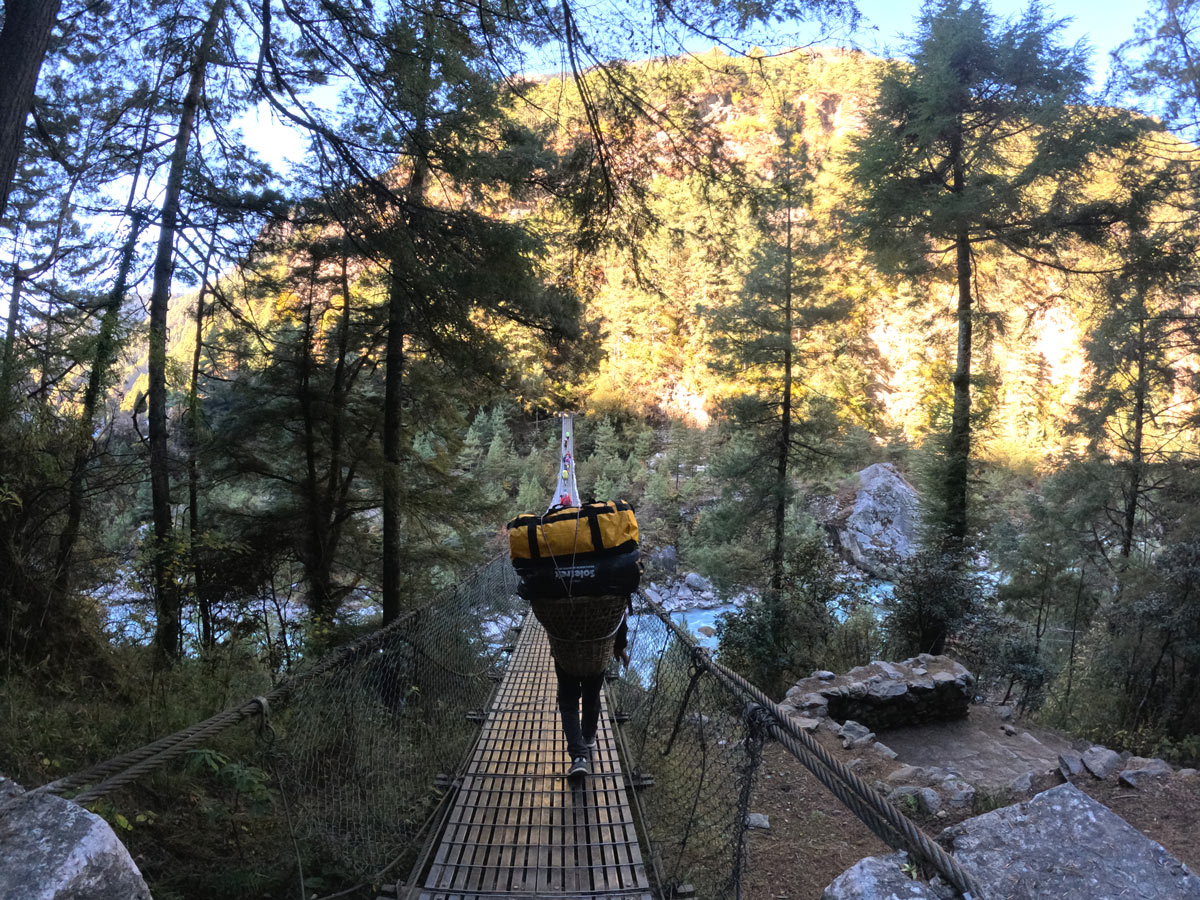
The trail of Everest Base Camp trek passes through lush forests, glacial rivers, alpine meadows, rocky terrains, and glacial moraines. The terrains as well as landscapes transform with every meter of elevation gain.
You will come across many gradual ascents and descents, while some short sections might also feature steep yet manageable ascents. You might also find some stone steps and high suspension bridges to tackle.
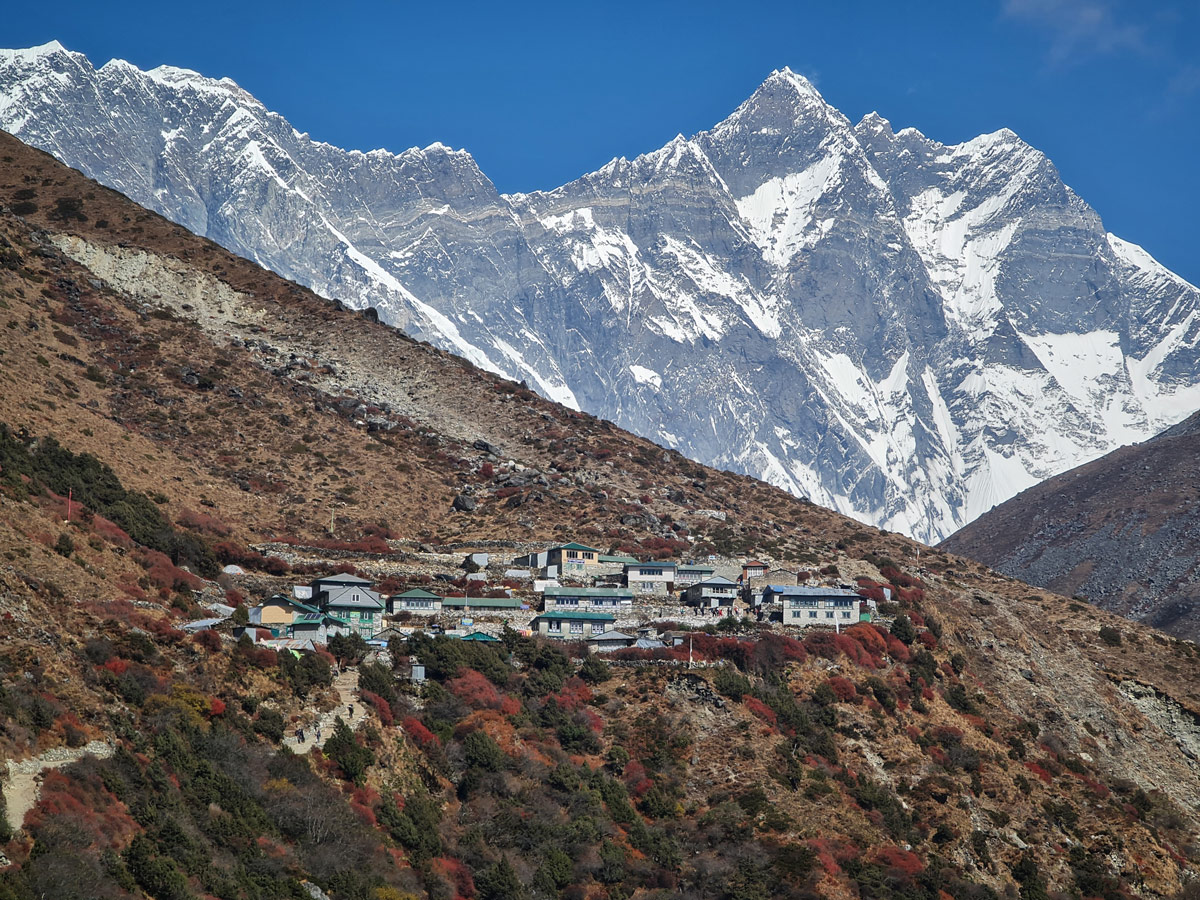
At low altitudes, you can expect vibrant green forests, terraced fields, and charming traditional Sherpa villages which transitions into sparser vegetations as you move higher up.
At high altitudes lie the spiritual heartland of the Khumbu, Tengboche Monastery. This is also the realm of towering peaks, dramatic glacial valleys, and a stark, beautiful landscape that truly makes you feel like you’re on top of the world.
Beyond the natural beauty, the trail is also dotted with cultural landmarks like prayer flags fluttering in the wind, intricately carved Mani walls, Mani stones, prayer wheels, and traditional chortens (Buddhist stupas) putting the Sherpa life on display.
Trails, Walking Hours and Distance: During EBC Trek
The Everest Base Camp trail offers a dynamic mix of natural beauty, spiritual richness, and trekking adventure. The trail ranges from lush forests to alpine meadows to rugged terrain to glacial moraines.
As you begin from Lukla, the trail gently descends until Cheplung and then gradually ascends via Thado Koshi to reach Phakding passing through serene, lush forests.
From there, the path winds through pine and juniper forests until we reach Sagarmatha National Park, where your permit will be checked and then we descend toward Jorsalle.
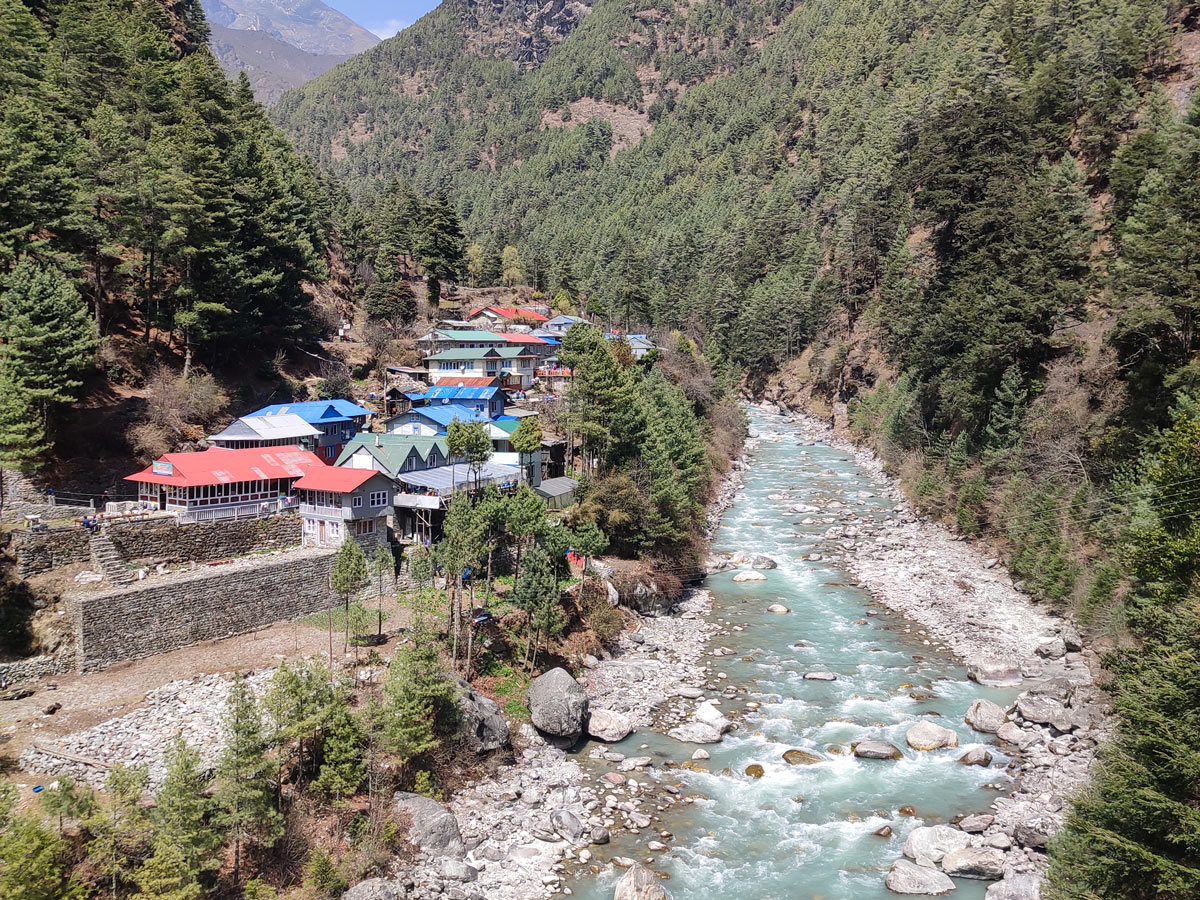
Along the way, you’ll cross multiple suspension bridges, including the iconic Hillary Bridge then after a steady one-and-a-half-hour uphill climb from the bridge takes you into the vibrant mountain town of Namche Bazaar.
Leaving Namche, the trail gently ascends to the Tenzing Norgay Memorial viewpoint, rewarding you with sweeping views of Everest, Ama Dablam, and Thamserku.
The path then descends gently through forests to Phungi Thenga before a steep but manageable 2-hour ascent brings you to the spiritual center of Tengboche Monastery.
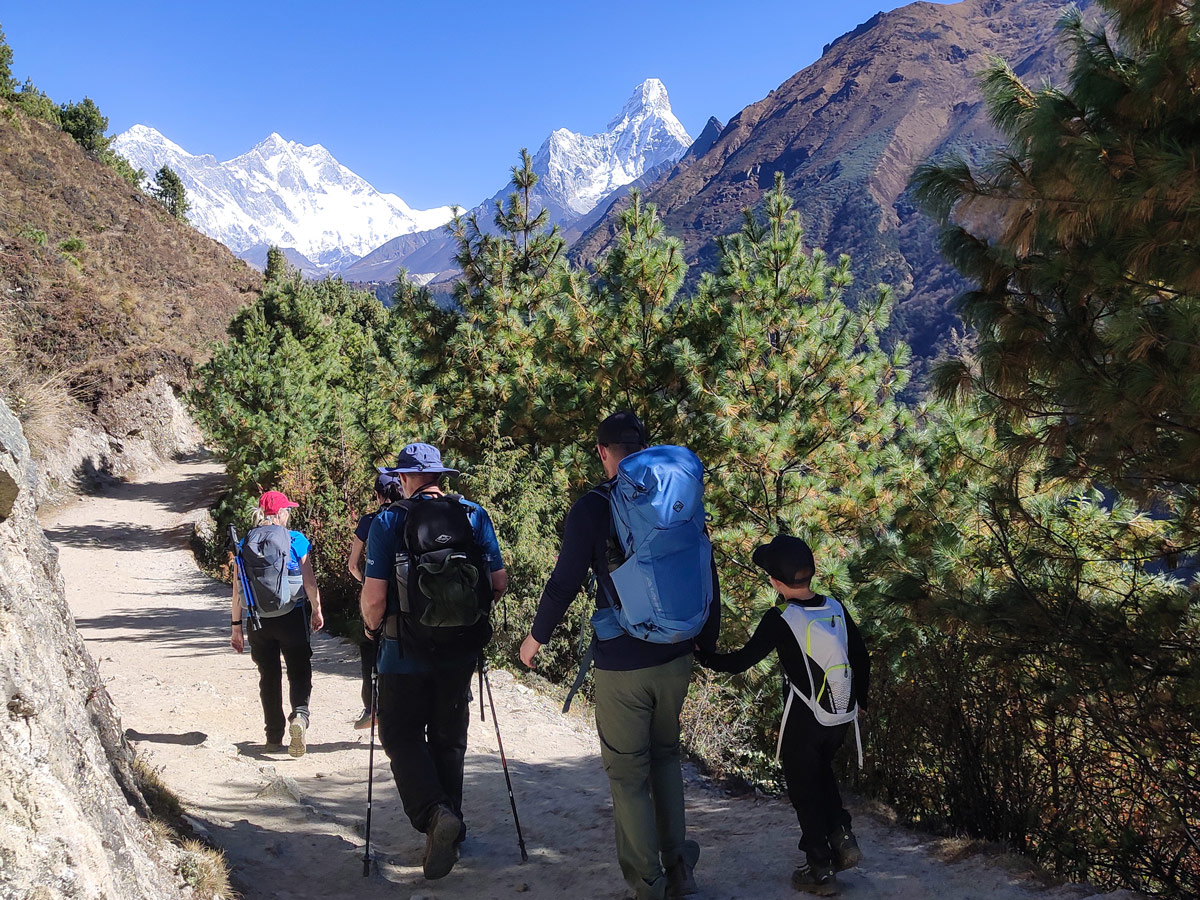
From Tengboche, the trail descends to Debuche, followed by a gentle uphill toward Pangboche and a gradual ascent through Somare and Warsaw until reaching Dingboche.
From Dingboche to Thukla, the trail follows a “Nepali flat” structure, a gentle ascends, before ascending gradually to the Thukla Pass memorial site. From there, it’s a steady walk to Lobuche.
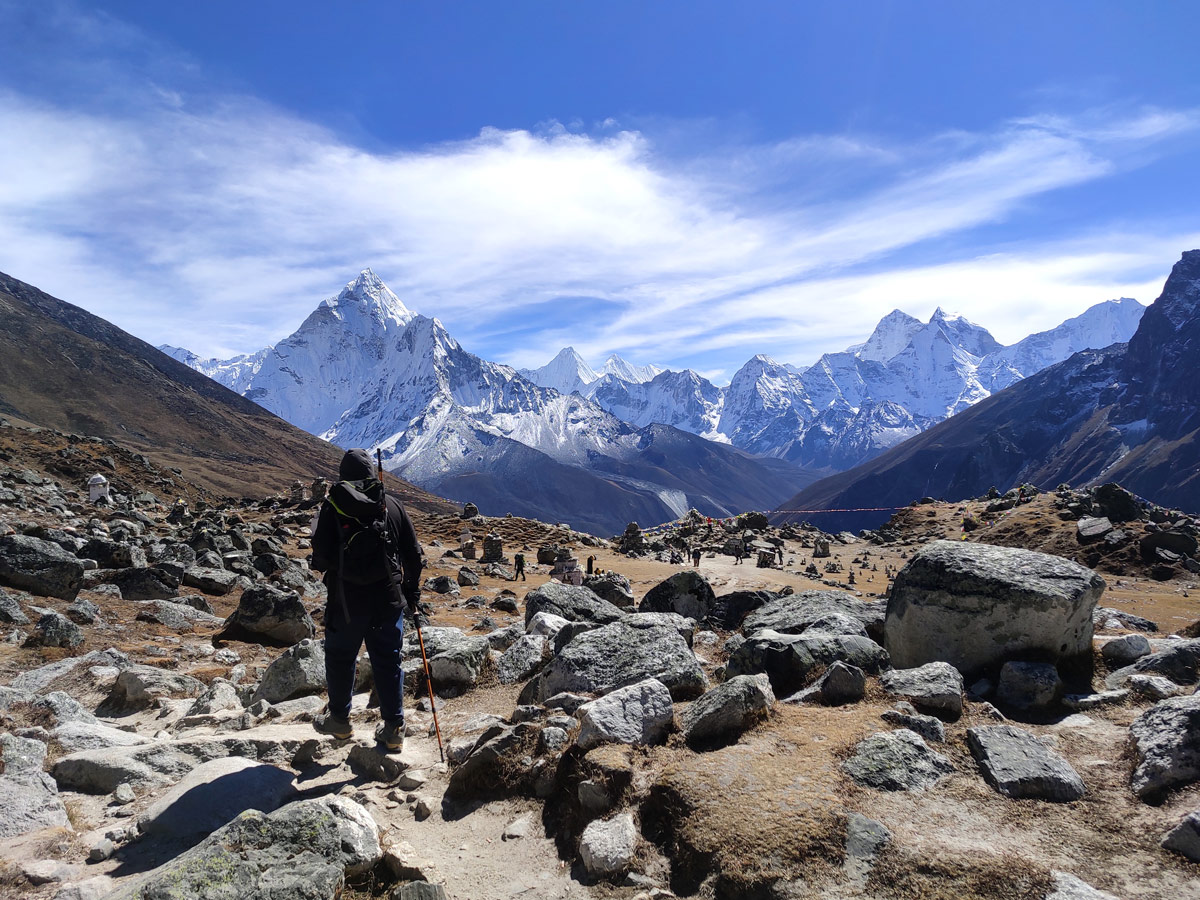
The trail is mostly done on rugged terrain and glacial moraines with unpredictable harsh situations such as weather change and dry windy environments.
The final stretch from Lobuche to Everest Base Camp alternates between gentle ascents and rocky glacial undulations, offering breathtaking views of the Khumbu Icefall and surrounding giants.
Every day trekkers need to hike from 4-7 hours a day depending upon their pace, health, stamina, and how well they can acclimatize in high mountain environment.
For better understanding of the walking distance and number of hours per day that you will be covering daily, we have created a table below:
| Day | Location | Distance (km) | Duration (hours) |
| 2 | Lukla – Phakding | 8 km | 3 to 4 hrs |
| 3 | Phakding – Namche Bazaar | 12.3 km | 5 to 6 hrs |
| 4 | Namche Bazaar (Acclimatization) | 7.2 km | 4 to 5 hrs |
| 5 | Namche Bazaar – Tengboche | 10.7 km | 5 to 6 hrs |
| 6 | Tengboche – Dingboche | 10.8 km | 5 to 6 hrs |
| 7 | Dingboche (Acclimatization) | 5.2 km | 4 to 5 hrs |
| 8 | Dingboche – Lobuche | 8.8 km | 5 to 6 hrs |
| 9 | Lobuche – Everest Base Camp – Gorakshep | 11.5 km | 8 to 9 hrs |
| 10 | Gorakshep – Kalapatthar – Periche | 17.2 km | 8 to 9 hrs |
| 11 | Periche – Namche Bazaar | 19.7 km | 7 to 8 hrs |
| 12 | Namche Bazaar – Lukla | 19.9 km | 8 to 9 hrs |
A Beginner Friendly Guided Itinerary
As of 2025, trekking in Nepal is regulated by the government and you cannot trek alone and unsupervised in most of the trekking routes of Nepal. That means a trekking guide is compulsory for your trekking adventure.
It is a great initiative, especially for beginners as opting for a guided trek is not just convenience but an essential part of a safe and successful EBC adventure. The local guides can help you smoothly navigate all the aspects of your trek.
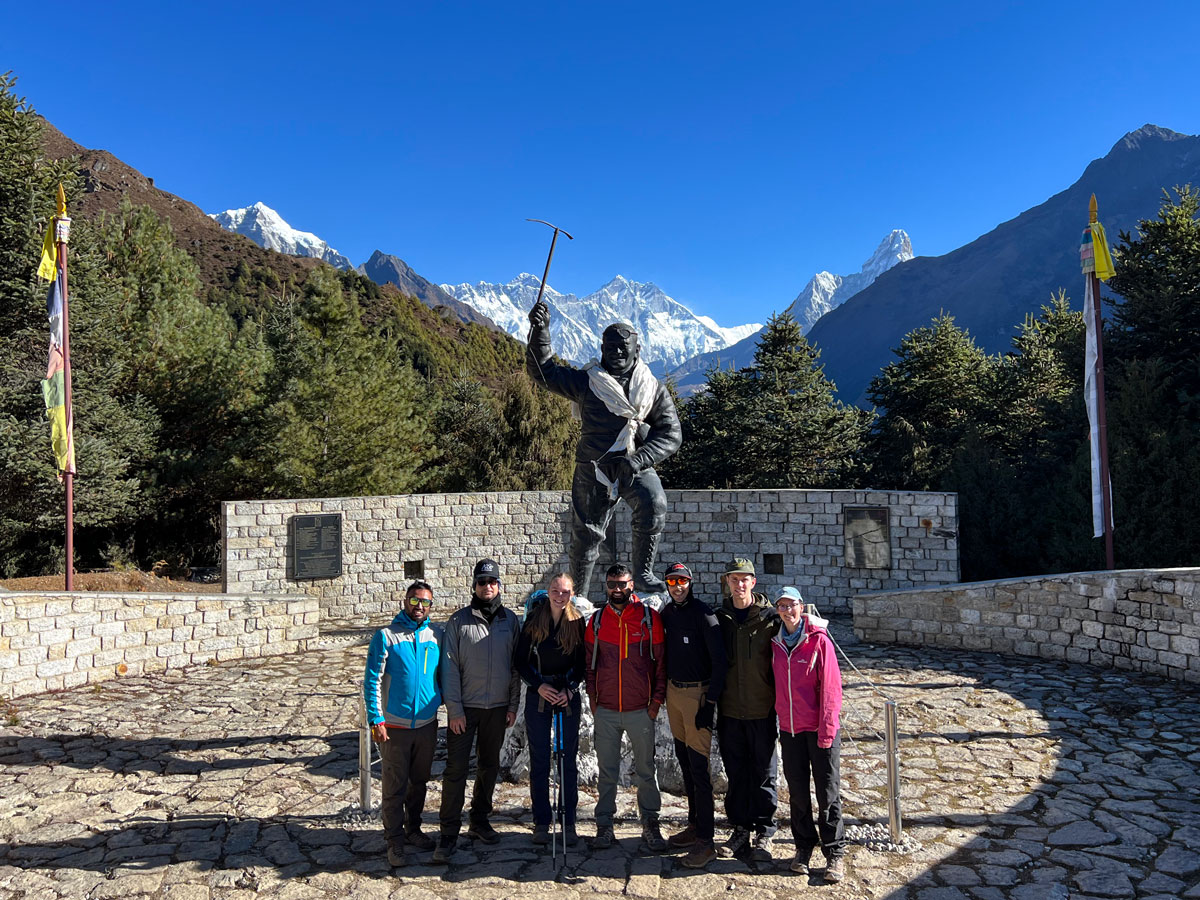
You can hire local and reliable trekking agencies like Ace the Himalaya which can help you with guides, itinerary, permits, and everything else. Ace the Himalaya prides itself on meticulously planned itineraries and highly experienced local guides.
Our itinerary helps you to make the best out of your 2-week adventure in the Everest region while ensuring you are well rested and safe. Below is our beginner friendly guided itinerary for Everest Base Camp Trek:
Day 01: Arrival at Tribhuvan International Airport in Kathmandu and transfer to hotel
Arrive at Tribhuvan International Airport, meet our representative, transfer to your hotel in our private tourist vehicle, and attend a detailed trek briefing.
Day 02: Fly to Lukla from Kathmandu or drive to Manthali/Ramechhap & flight to Lukla and then trek to Phakding
A thrilling mountain flight to Lukla followed by a gentle, downhill walk to your first tea house. During peak seasons, the flight to Lukla will be operated from Ramechhap/Manthali due to air traffic expansion.
Day 03: Trek to Namche Bazaar from Phakding
A more challenging day with significant uphill sections, culminating in the vibrant Sherpa capital.
Day 04: Acclimatization Day at Namche. Hike to Hotel Everest View and back
Explore the town, visit the Sherpa Museum, and hike to the Everest View Hotel for stunning panoramic vistas of Everest, Lhotse, and Ama Dablam.
Day 05: Trek to Tengboche from Namche Bazaar
Enjoy spectacular mountain views on your way to the revered Tengboche Monastery.
Day 06: Trek to Dingboche from Tengboche
The landscape starts to become more barren as you gain altitude, entering the high Himalayan zone.
Day 07: Acclimatization Day. Hike to Nangkartsang Peak and back
Take a challenging hike to Nangkartshang Peak (approx. 5,000m) for incredible views, then descend for crucial acclimatization.
Day 08: Trek to Lobuche from Dingboche
A relatively shorter trek, but the altitude is noticeably higher.
Day 09: Trek to Everest Base Camp and then back to Gorak Shep
The most anticipated day! Trek to Gorak Shep, check into your tea house, have lunch, then trek to Everest Base Camp. Return to Gorak Shep for the night.
Day 10: Morning Hike to Kala Patthar and then, Descend to Pheriche
An early morning hike to Kala Patthar for a breathtaking sunrise over Everest, then begin the significant descent back to Pheriche.
Day 11: Trek to Namche Bazaar from Pheriche
Continue descending, enjoying the feeling of increased oxygen.
Day 12: Trek to Lukla from Namche Bazaar
The final trekking day back to Lukla.
Day 13: Flight back to Kathmandu or Manthali/Ramechhap from Lukla and same day drive to Kathmandu
A scenic flight back to the capital.
Day 14: Transfer to the International Airport for your final departure
Depart for your home country.
Trekking Days and Daily Routine
As a beginner, it is important to know what to expect each day on the trek. In general, every day of trekking involves around 5 to 7 hours of hiking for the duration of 12 days.
The mornings begin early after breakfast so that you can keep the pace slow and steady and not really rush towards the destination. While you are somewhere around the middle, you will stop at a teahouse for lunch and energy boost.
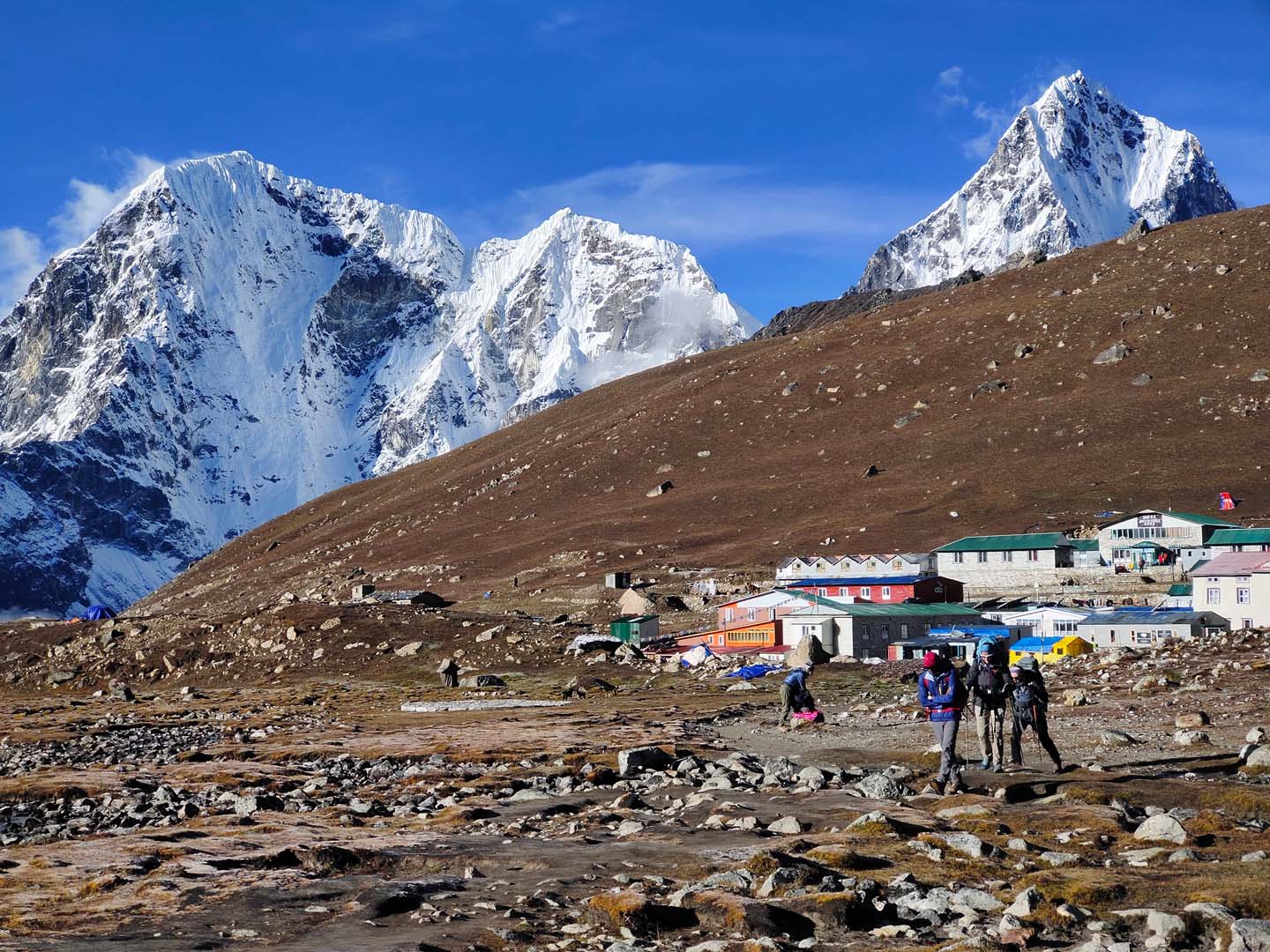
As you reach the everyday final location, evenings are spent in cozy tea houses with hot meals, seasonal fruits, and warm drinks and conversations by the inbuilt heater around dining room.
Some days might be shorter while some can also be slightly more strenuous.
The main key to maintaining a steady trekking routine across all the days is to go slow and in a consistent pace to avoid tiring yourself out as well as to prevent altitude sickness.
Physical Stamina Requirements for Beginners
While the Everest Base Camp trek doesn’t really feature technical sections, you still need to have a good number of physical stamina for the trek. Having said that, you also don’t need to be a seasoned athlete.
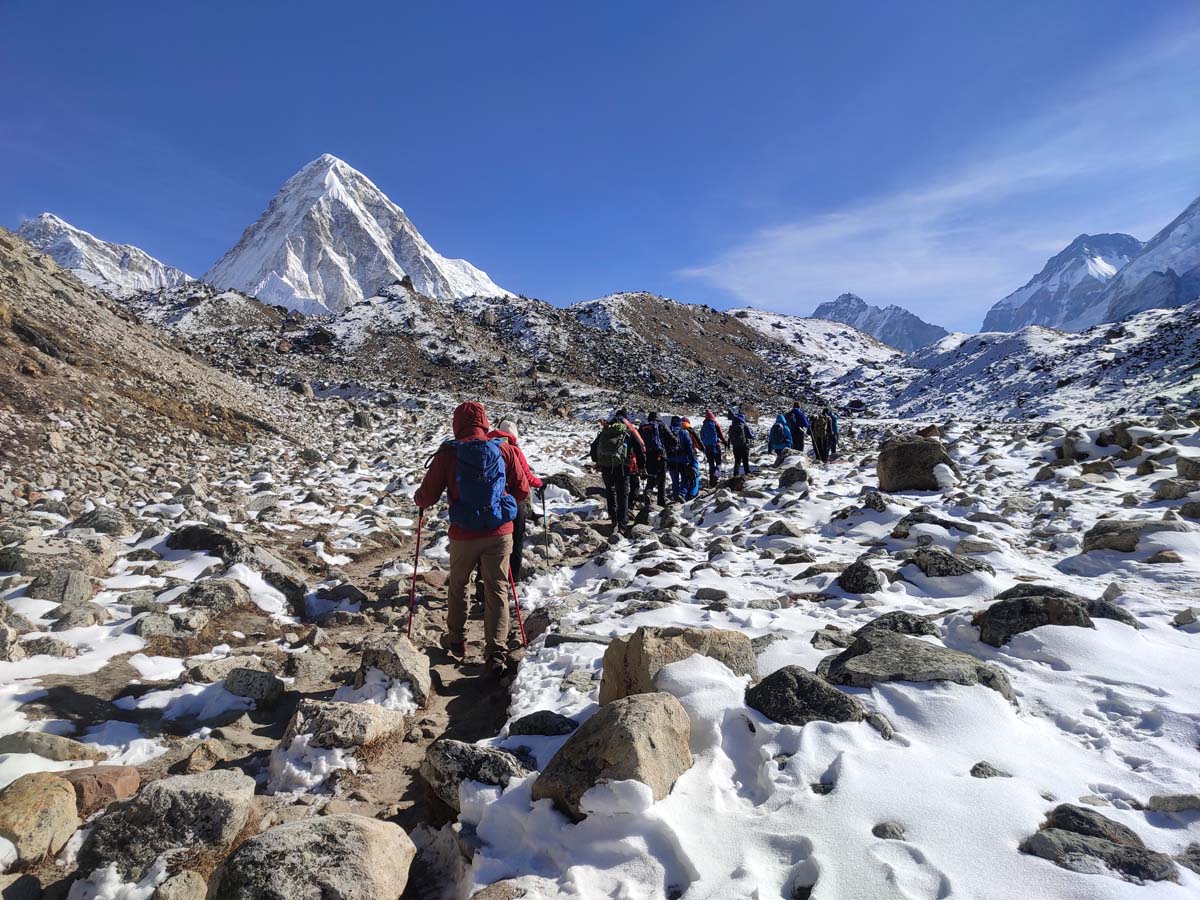
Moderate physical fitness is crucial, and it can be achieved by constant training for at least 2-3 months before the trek. You can include cardiovascular exercises and core training along with strength training in your workout while you prepare for EBC trek.
These exercises can include jogging, swimming, dancing, squats, weight lifting, stretching, engaging your core, and going on actual short hikes which can simulate realistic trek like conditions. Focus on consistency more than intensity.
The Importance of Acclimatization Days
Be it Everest Base Camp trek or any other high altitude trekking route, the golden rule to tackling it is to know everything about acclimatization and to integrate it into your trek.
In the EBC trek, you will be reaching to altitudes well beyond the 5,000 meters mark which can be tough for seasoned trekkers and beginners alike. This can put you at the risk of getting altitude sickness.
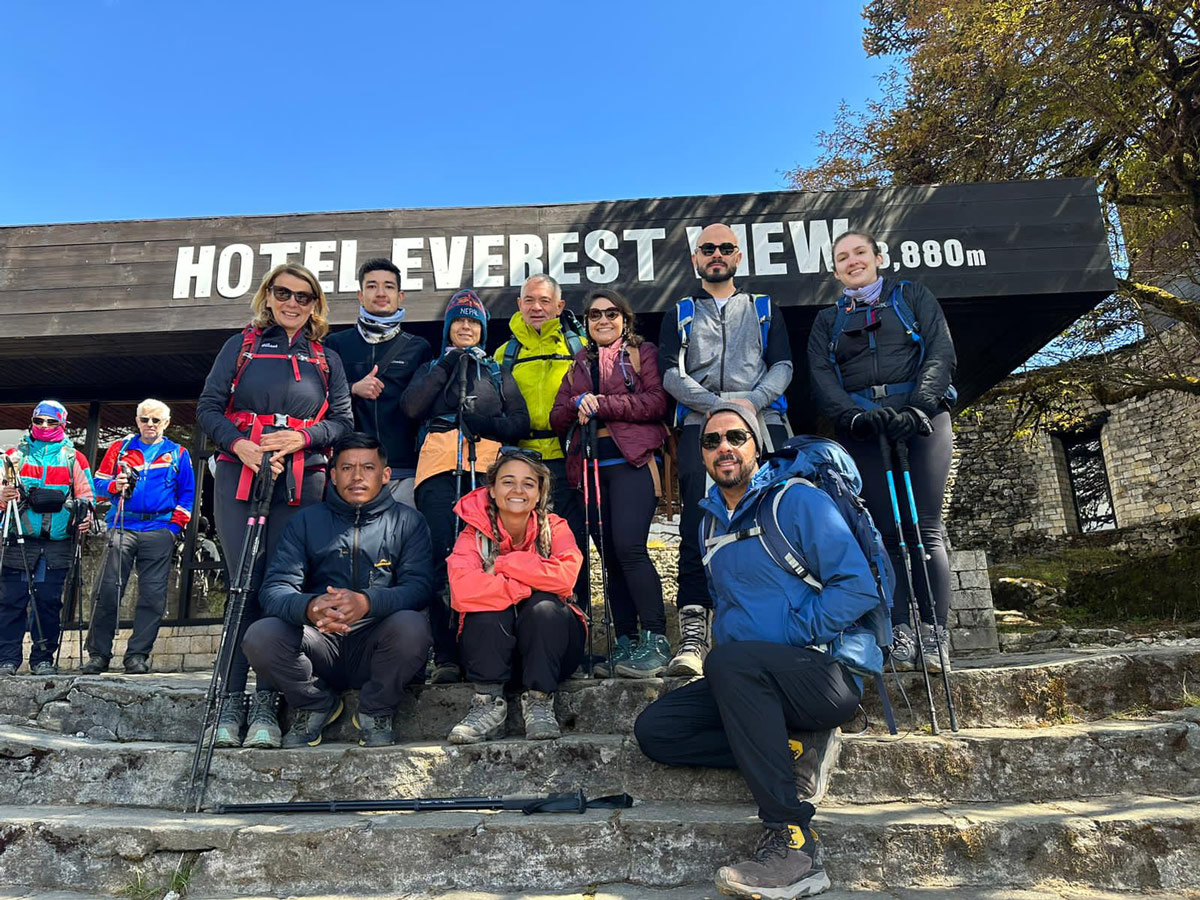
Your body might not really adapt to the changing conditions, and you might end up with symptoms like nausea, vomiting, loss of appetite, which can convert into more serious issues like High Altitude Pulmonary Edema and High Altitude Cerebral Edema.
Therefore, you should acclimatize well to mitigate these risks. The main part of acclimatization is to maintain a sensible ascent profile. You can adapt the ‘Climb High, Sleep Low’ principle to allow your body to adapt.
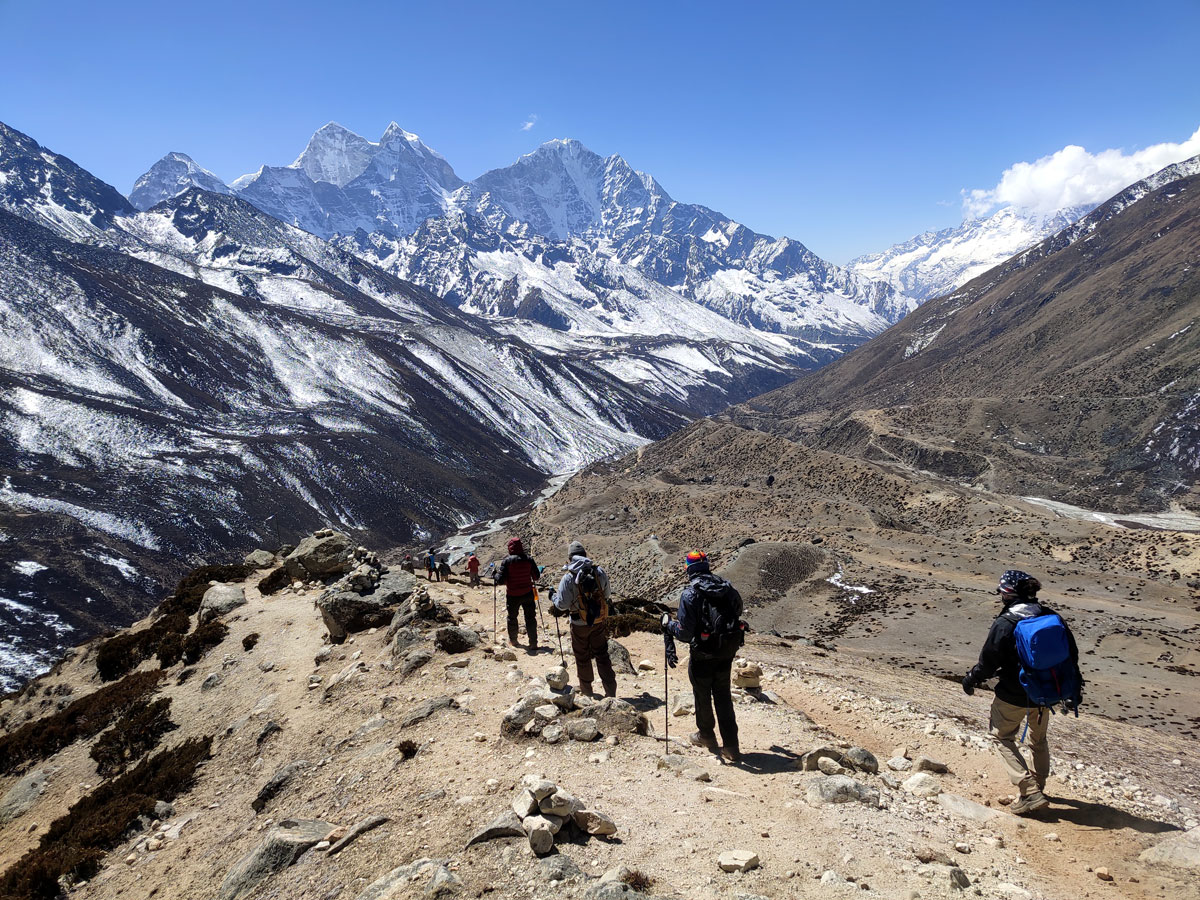
Also make sure to add dedicated acclimatization days in your itinerary during which you can go on short acclimatization hikes from Namche Bazaar and Dingboche.
Drink plenty of fluids as dehydration exacerbates AMS symptoms. Pay close attention to any changes in your condition. Report any AMS symptoms to your guide immediately. Avoid alcohol and smoking and get adequate sleep.
Healthy Food and Enough Hydration
Your diet and hydration are very important during all high-altitude treks, including the Everest Base Camp trek. They not only provide you with enough fuel for the trek but also helps to keep altitude sickness at bay.
The teahouses along the EBC trek will provide you with a quite elaborate menu with most of them offering international cuisine as well as the mouthwatering Sherpa delicacies.
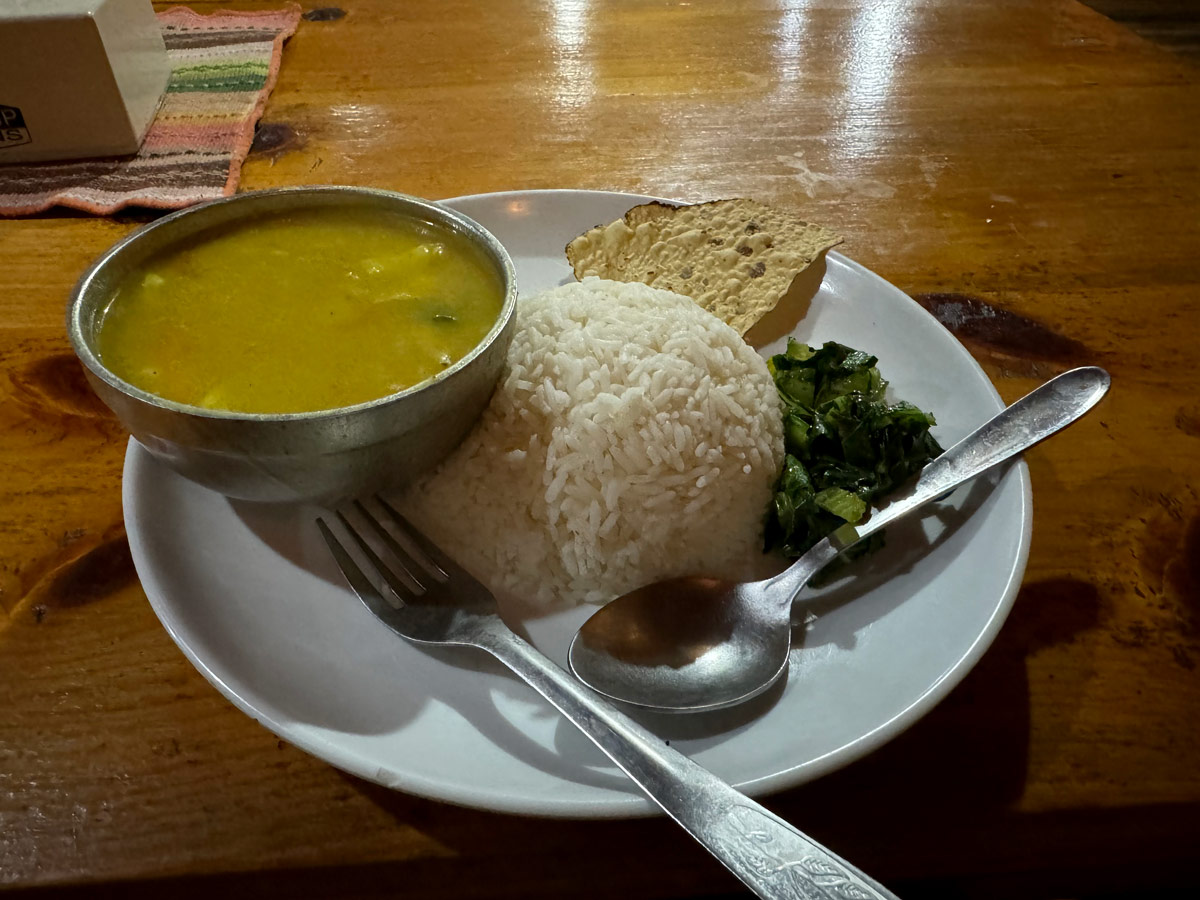
You should focus more on carbohydrate rich food which can be digested easily. Embrace the local staple Dal Bhat (lentil soup, rice, and vegetables) which is nutritious, filling, and often comes with free refills.
Other options can include pasta, noodles, momo, thukpa, dhido, rice dishes (fried rice, veg curry with rice), and potatoes. To prevent stomach upsets, stick to vegetarian meals or else you might end up with food poisoning.
Bring your own supply of high-energy snacks like nuts, dried fruit, energy bars, and chocolates for quick boosts between meals. Drink at least 3 to 4 liters of water daily and avoid alcohol and limit caffeine to prevent dehydration.
Mental Preparedness and Adaptability
Yes, the Everest Base Camp trek is a physical challenge. However, it is also a mental challenge as it puts your mental fortitude and resilience at test under the extreme conditions.
Therefore, you should be as prepared mentally as you are physically so that you don’t just make it through the trek but also enjoy it thoroughly. This is even more applicable for beginners who might be new to these conditions.
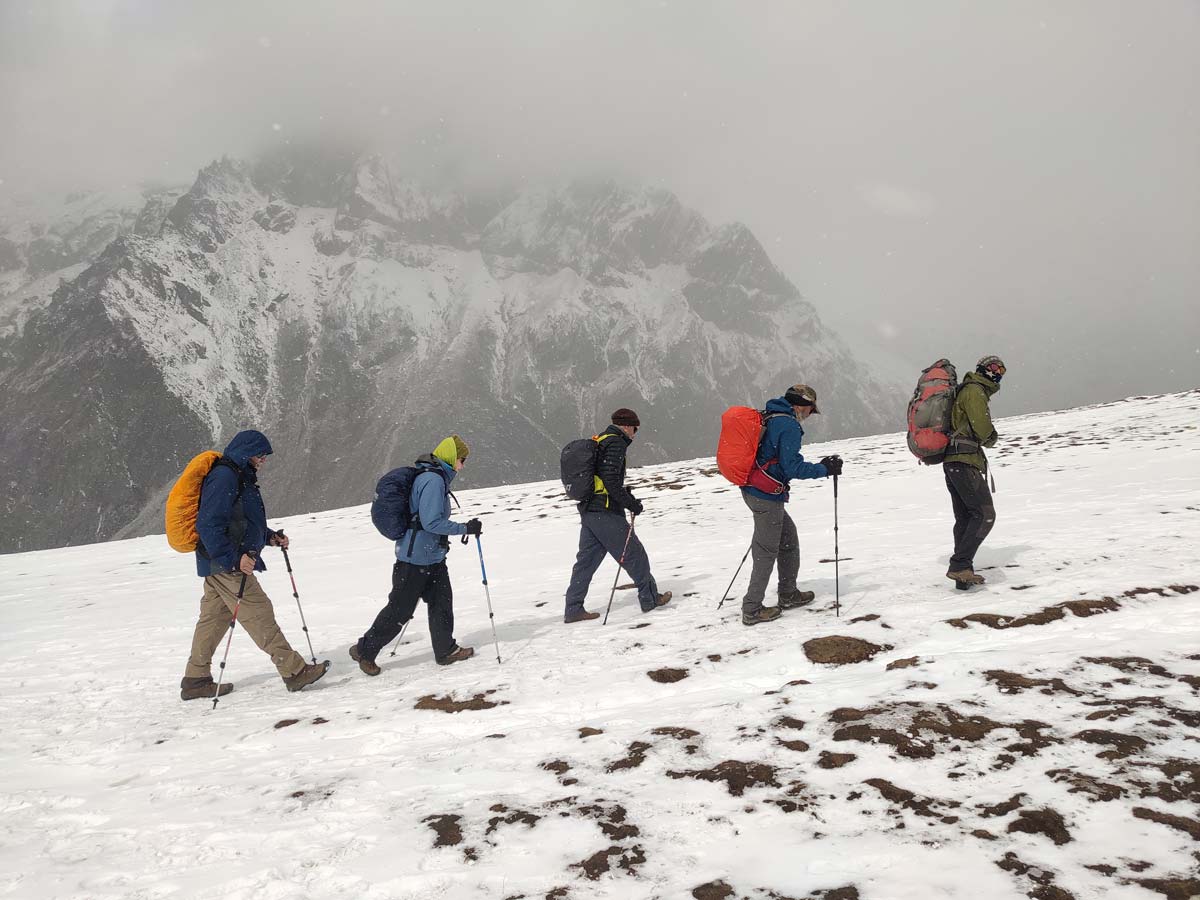
You should be prepared to live with basic amenities and be open to sharing your resources with fellow trekkers. Also, be absolutely prepared for a digital detox as while the EBC does feature Wi-Fi and connectivity, its network is not always guaranteed.
You should also be prepared to deal with the fatigue and soreness as well as other unforeseen circumstances. Embracing meditation, yoga, and breathing techniques can be of great help.
Don’t just focus on the destination. Savor the journey itself. Celebrate small victories along the way. The immense sense of accomplishment at EBC often stems from overcoming not just physical but also mental hurdles.
Can you trek to Evererest Base Camp as a beginner?
Now that we have covered all the challenges of the Everest Base Camp trek, you must have a clear picture in your mind. If you are still confused whether the Everest Base Camp Trek is suitable for beginners- the answer is YES!
As a first time trekkerit is absolutely possible for you to complete the everest base camp trek with proper preparation, guided itinerary, thorough acclimatization, and crucial help from your guide. If you’re ready to trade luxury comfort for unforgettable adventure and embrace the mountains, EBC will welcome you with open arms.
